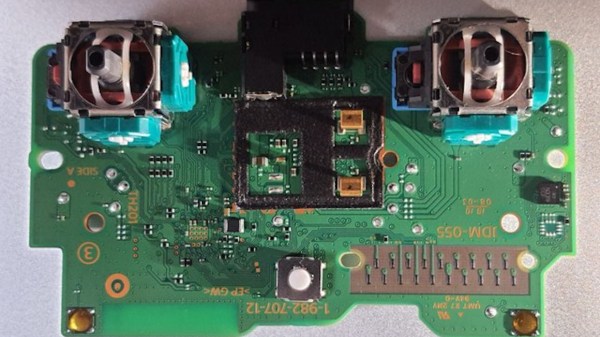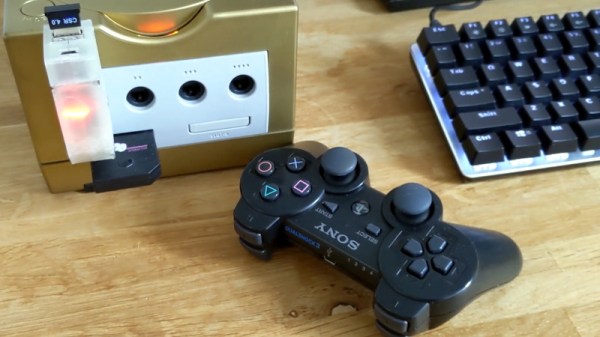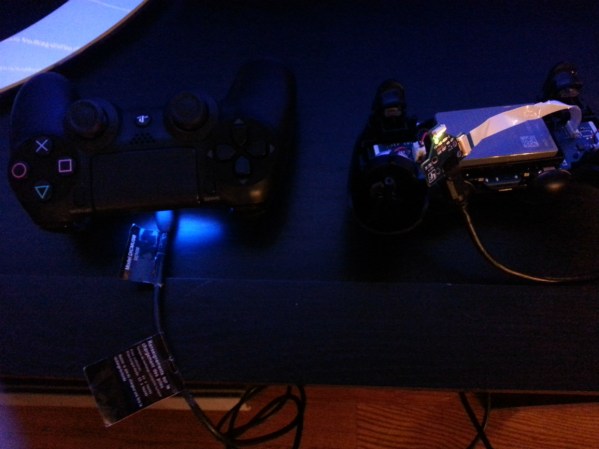A broken PlayStation controller would normally be a bummer, and if the issue is losing calibration that’s stored in a non-documented format, you might as well bin it. For [Al] of [Al’s blog], however, it’s a challenge, turning into a four-part story – so far. The first installment was published January 1st this year, and seeing the pure enthusiasm [Al] has reverse-engineering the DualShock 4 controller, you might guess that this is a New Year’s gift from someone who knows [Al] very well. The list of problems with the joystick is numerous, to begin with – it’s easier to list all the things that work properly, and it isn’t many of them. Perhaps, the firmware problem is is the most interesting one to start with. Continue reading “Challenging A Broken DualShock 4 Controller To A Duel”
DualShock5 Articles
Bluetooth PS3 Controllers Modernize The Nintendo GameCube
While the PlayStation 3 and Gamecube come from opposing sides of the aisle, and in fact aren’t even from the same generation of hardware, this DIY adapter built by [Jeannot] allows Nintendo’s console to use Sony’s Bluetooth controllers with surprisingly little fuss. This might seem unnecessary given the fact that Nintendo put out an official wireless controller for the system, but given how expensive they are on the second-hand market, you’d need to have pretty deep pockets for an untethered four-player session. Plus, there’s plenty of people who simply prefer the more traditional control layout offered by Sony’s pad.
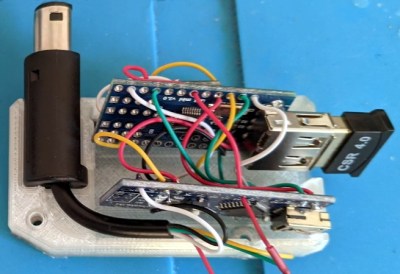 The internals of the 3D printed adapter are actually quite straightforward, consisting of nothing more than an Arduino Nano wired to a MAX3421E USB host shield. A common USB Bluetooth adapter is plugged into the shield, and the enclosure has an opening so it can be swapped out easily; which is important since that’s what the PS3 controller is actually paired to.
The internals of the 3D printed adapter are actually quite straightforward, consisting of nothing more than an Arduino Nano wired to a MAX3421E USB host shield. A common USB Bluetooth adapter is plugged into the shield, and the enclosure has an opening so it can be swapped out easily; which is important since that’s what the PS3 controller is actually paired to.
A Gamecube controller extension cable must be sacrificed to source the male connector, though if you wanted to fully commit to using Bluetooth controllers, it seems like you could turn this into an internal modification fairly easily. That would let you solder right to the controller port’s pads on the PCB, cutting the bill of materials down ever further.
[Jeannot] says the firmware is the product of combining a few existing libraries with a fair amount of experimentation, but as demonstrated in the video below, it works well enough to navigate the console’s built-in menu system. Future enhancements include getting the stick sensitivity closer to the values for the Gamecube’s standard controller, and adapting the code to work with newer PS4 controllers.
We’ve seen a fair amount of projects dedicated to the Gamecube’s official wireless controller, the Wavebird. From reverse engineering its RF communications protocol to adapting it for use with Nintendo’s latest console. There’s little debate that the Wavebird is a fine piece of engineering, but with how cheap and plentiful PlayStation controllers are, they tend to be the one hackers reach for when they want a dual-stick interface for their latest creation.
Continue reading “Bluetooth PS3 Controllers Modernize The Nintendo GameCube”
PS4 Controller LEDs Suck (the Battery)
The new Playstation 4 Dualshock controllers are super high-tech. They have bright shiny lights on them to prove it.
But [xn0] from neograf.com had a suspicion about these new-fangled controllers. That LED light bar is awfully bright, how much power does it consume?
As it turns out, quite a bit. After dismantling one of his controllers he discovered the LEDs are connected to the main PCB with a ribbon cable — super easy to detach. He then performed some rather unscientific tests of leaving the controllers on over night. His empirical conclusion? If you leave the controller with lights on it will die within 24 hours, if you disable the lights, it will still be at approximately 66% battery capacity after the same amount of time.
Another user on the forums quickly pointed out that this test could have been as simple as using a multimeter — so he did that afterwards. The LEDs appear to draw around 40-50mA, which isn’t that much, but it is more than the controller uses while idle (30-40mA)!
We assume Sony will add a firmware option to turn these lights off in the future, but until then, if you’re really dying for an extra hour or so of gameplay, it’s a super easy modification.
[via ps3hax.net]
Hacking Helps Bring Educational Robot Projects In For A Few Dollars
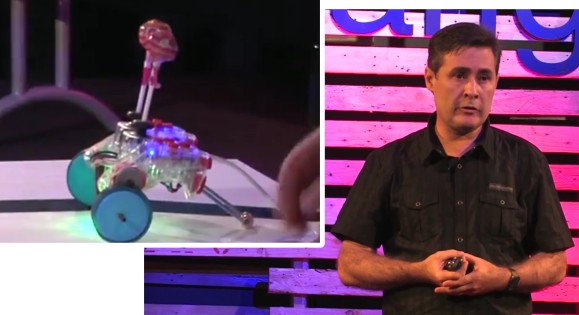
Meet [Dr. Thomas Tilley] and his robot Suckerbot which looks very much like a clear-plastic six-axis controller. His presentation at this year’s TEDxChiangMai is made of the stuff that makes us feel warm inside.
[Thomas] has been using joystick hacks to bring smiles to faces of kids in his part of Thailand. The video below covers some that he has done over the years. These include racing cockpits made out of PVC or bamboo which patch into a cheap joystick to control the action on a traditional gaming console. He’s also spun a different take on multiplayer Guitar Hero by splitting up the fret and strum actuators between several different kids.
But the main topic of his presentation is Lollybot, which is an Americanized version of its original moniker: Suckerbot. This was his entry into a 2012 contest which tasked hackers to build a robot that would cost under $10 to replicate in the classroom. That’s quite a challenge but he actually did it with enough to spare for a snack afterwards. Suckerbot is so named because he added a couple of candy suckers to the analog joysticks of a knock-off PlayStation controller. They act as inverted pendulums; when the robot runs into something the suckers shake which can be read by the computer controlling the robot. Food container lids wrapped with rubber act as wheels which are spun by the vibration motors from the joystick. And there’s even a set of line-following sensors built from photoresistors and some LEDs. His calculated cost? Just $8.96!
The hope is that robot projects stemming from this contest will help produce the next generation of hackers in Africa. If this stuff gets you excited you can take part. This year’s challenge deadline has been extended.
Continue reading “Hacking Helps Bring Educational Robot Projects In For A Few Dollars”
Long Distance PS3 Controller

Sony’s DualShock 3 controller can be seen in a number of projects here on Hackaday. There’s a reason for this: it’s easy to sniff the Bluetooth signals coming out of this controller and make any electronics project do your remote control bidding. Bluetooth has a fairly limited range, though, so what happens if you’d like to use this very comfortable and very functional controller over a mile or so? Just replace the mainboard of the controller with a new design using an Xbee radio. It’s a great project from the workbench of [Marcel] and looks to be just the solution for an awesome Xbee remote control.
The Sony DualShock 3 controller is designed around a single main board for the bulk of the electronics and analog sticks with three daughterboards used for every other button on the controller. [Marcel] took the main board out of his controller and stated to reverse engineer the thing, keeping the USB charging, PC communication, force feedback and LED indicators. Instead of Bluetooth as in the original circuit, [Marcel] used a 60mW XBee radio, allowing him to control just anything connected to another XBee radio with a range of up to a mile.
[Marcel]’s new main board is a direct drop in replacement for the original DualShock 3 mainboard, and the only modification to the controller is drilling a small hole for the new antenna. It’s a great piece of kit for RC vehicles of any kind, and it’s fully programmable for whatever robotics project you might have in mind.
Thanks {Roel] for sending this one in.

